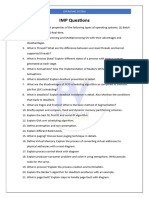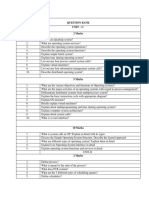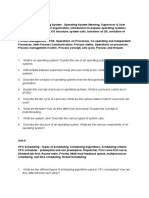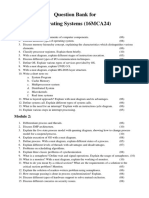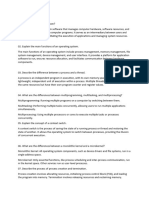0% found this document useful (0 votes)
3 views1 pageModule 2 - Question Bank
The document contains a series of questions related to operating systems, covering topics such as CPU scheduling, process synchronization, deadlocks, memory management, and virtual memory techniques. It includes both 2-mark and 8-mark questions that require definitions, explanations, and comparisons of various concepts and algorithms. The questions aim to assess understanding of key principles and mechanisms in operating systems.
Uploaded by
nishall.s1006Copyright
© © All Rights Reserved
We take content rights seriously. If you suspect this is your content, claim it here.
Available Formats
Download as PDF, TXT or read online on Scribd
0% found this document useful (0 votes)
3 views1 pageModule 2 - Question Bank
The document contains a series of questions related to operating systems, covering topics such as CPU scheduling, process synchronization, deadlocks, memory management, and virtual memory techniques. It includes both 2-mark and 8-mark questions that require definitions, explanations, and comparisons of various concepts and algorithms. The questions aim to assess understanding of key principles and mechanisms in operating systems.
Uploaded by
nishall.s1006Copyright
© © All Rights Reserved
We take content rights seriously. If you suspect this is your content, claim it here.
Available Formats
Download as PDF, TXT or read online on Scribd
/ 1


